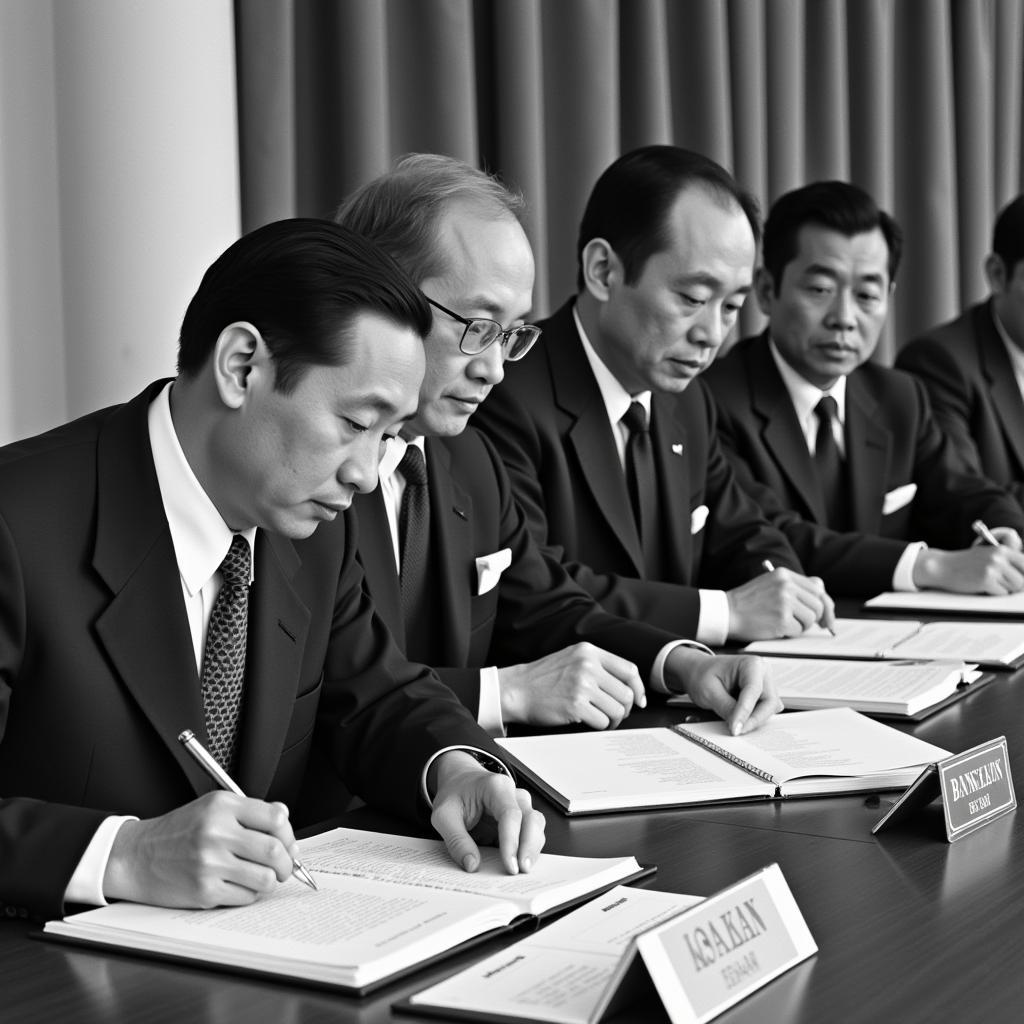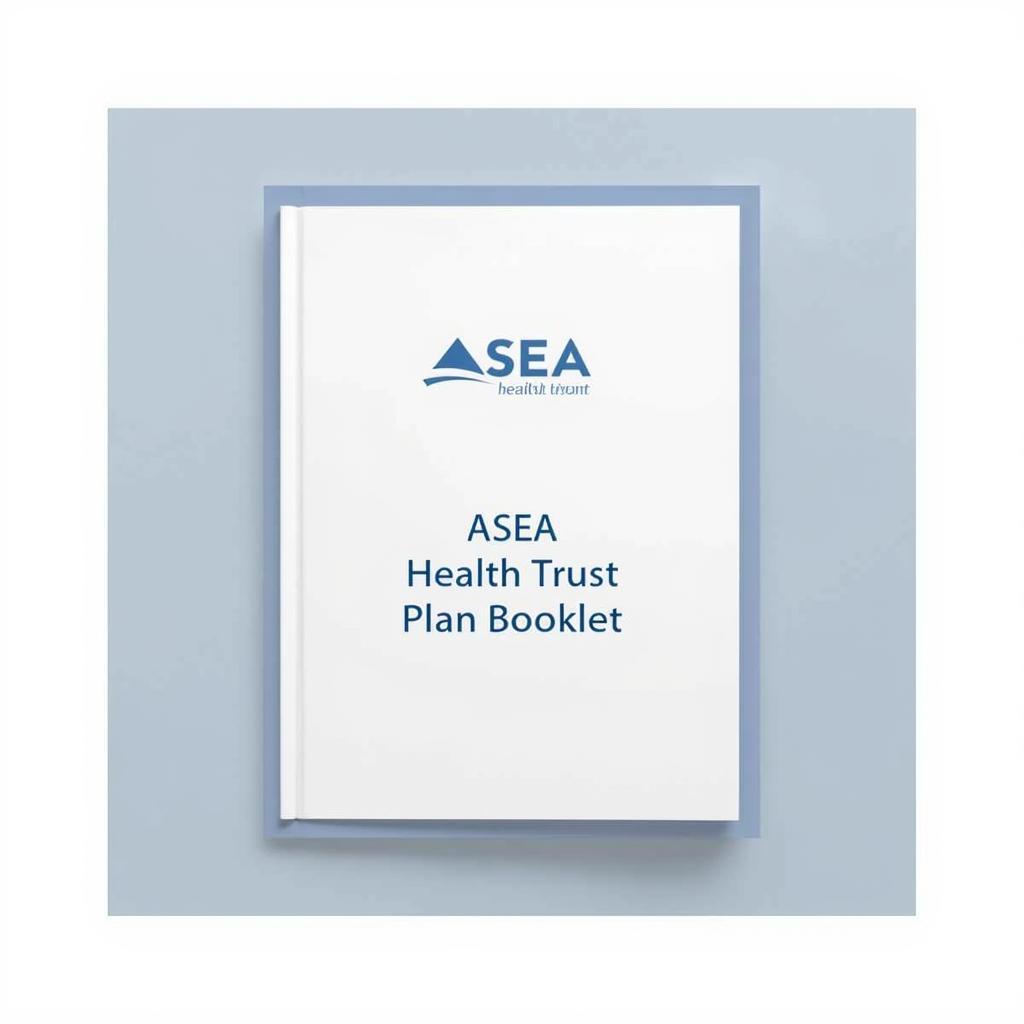The Association of Southeast Asian Nations (ASEAN) stands as a testament to regional cooperation and integration. But why was ASEAN formed? What drove these nations to come together? This article delves into the historical context, motivations, and key factors that led to the establishment of this influential organization.
 ASEAN Founding Fathers Signing the Bangkok Declaration
ASEAN Founding Fathers Signing the Bangkok Declaration
The Seeds of Collaboration: A Region in Flux
To grasp the significance of ASEAN’s formation, we must rewind to the mid-20th century. Southeast Asia was emerging from the shadows of colonialism, grappling with the complexities of independence, and facing the looming threat of communism. This volatile environment fostered a shared desire for peace, stability, and economic growth among the region’s leaders.
1967: A Pivotal Year for Regional Unity
On August 8, 1967, a historic event unfolded in Bangkok, Thailand. Five Southeast Asian nations – Indonesia, Malaysia, the Philippines, Singapore, and Thailand – came together to sign the ASEAN Declaration, also known as the Bangkok Declaration. This pivotal document laid the foundation for a new era of regional cooperation.
Addressing the ‘Why’: Unpacking the Motivations
The formation of ASEAN was driven by a complex interplay of factors:
- Political Stability and Security: The Cold War cast a long shadow over Southeast Asia, with the threat of communist expansion a constant concern. ASEAN provided a platform for member states to present a united front against external threats and promote regional peace.
- Economic Cooperation: Recognizing the benefits of collective action, the founding members of ASEAN saw the potential for enhanced economic growth through trade liberalization, investment promotion, and collaboration in key sectors.
- Shared Cultural Heritage: Despite their diverse cultures and languages, Southeast Asian nations share a rich history and common values. ASEAN aimed to foster a sense of shared identity and promote cultural exchange.
Beyond the Founding Five: ASEAN’s Expansion
ASEAN’s journey towards regional integration didn’t stop with its five founding members. Over the years, the organization has expanded to encompass all ten Southeast Asian countries:
- Brunei Darussalam (joined in 1984)
- Viet Nam (joined in 1995)
- Lao PDR (joined in 1997)
- Myanmar (joined in 1997)
- Cambodia (joined in 1999)
 Map of ASEAN Countries
Map of ASEAN Countries
This expansion underscores ASEAN’s enduring appeal and its crucial role in fostering dialogue and cooperation across Southeast Asia.
ASEAN Today: Navigating Challenges, Embracing Opportunities
Today, ASEAN stands as a testament to the power of collaboration. The organization plays a vital role in:
- Promoting economic integration: The ASEAN Economic Community (AEC) aims to create a single market and production base, enhancing the region’s competitiveness in the global economy.
- Addressing transnational challenges: ASEAN provides a platform for member states to work together on issues like terrorism, climate change, and disaster management.
- Amplifying Southeast Asia’s voice on the global stage: ASEAN serves as a unified voice for its member states in international forums, promoting dialogue and cooperation on shared concerns.
The ASEAN Way: Consensus and Non-Interference
ASEAN’s approach to regional cooperation is characterized by two key principles:
- Consensus: Decisions within ASEAN are typically reached through consultation and consensus, ensuring that all member states have a voice and feel a sense of ownership over outcomes.
- Non-interference: ASEAN respects the sovereignty of its member states and refrains from interfering in their internal affairs.
While these principles have been praised for promoting stability and cooperation, they have also been subject to debate, particularly when it comes to addressing sensitive issues within member countries.
Looking Ahead: The Future of ASEAN
As ASEAN celebrates over five decades of existence, it faces a new set of challenges and opportunities. The rise of new global powers, rapid technological advancements, and evolving regional dynamics will continue to shape the organization’s trajectory.
Despite these challenges, ASEAN’s commitment to regional cooperation and integration remains steadfast. The organization’s enduring legacy lies in its ability to bring together diverse nations, foster dialogue, and promote peace and prosperity in Southeast Asia.
FAQs about ASEAN’s Formation
1. What were the main goals of ASEAN’s founders?
The founders of ASEAN aimed to achieve political stability, accelerate economic growth, and promote social progress and cultural development in the region.
2. How has ASEAN’s membership changed over time?
ASEAN started with five founding members and has expanded to include all ten Southeast Asian countries.
3. Why is the principle of non-interference important to ASEAN?
The principle of non-interference helps to maintain a balance of power and prevent conflicts among member states with different political systems and ideologies.
4. What are some of the key challenges facing ASEAN today?
ASEAN faces challenges such as narrowing the development gap between member states, addressing territorial disputes in the South China Sea, and combating transnational crime and terrorism.
5. How does ASEAN contribute to global governance?
ASEAN actively engages in dialogue and cooperation with other regional and international organizations, promoting multilateralism and a rules-based international order.
Exploring Further: Delving Deeper into ASEAN
For those seeking a more comprehensive understanding of ASEAN, the following resources offer valuable insights:
- The ASEAN Charter: This foundational document outlines the organization’s principles, purpose, and structure.
- The ASEAN Secretariat website: This official website provides access to a wealth of information on ASEAN’s history, activities, and publications.
- Academic journals and research papers: Numerous scholarly articles and books delve into various aspects of ASEAN, providing in-depth analysis and diverse perspectives.
asean bankers association email
Need Support? Connect with ASEAN Media Directory!
Have more questions about ASEAN or seeking reliable resources on Southeast Asia? Don’t hesitate to reach out to us at Asean Media Directory. Our dedicated team is here to assist you!
Contact Information:
- Phone Number: 0369020373
- Email: aseanmediadirectory@gmail.com
- Address: Thon Ngoc Lien, Hiep Hoa, Bac Giang, Vietnam
We provide 24/7 customer support to address your inquiries and connect you with the information you need.

